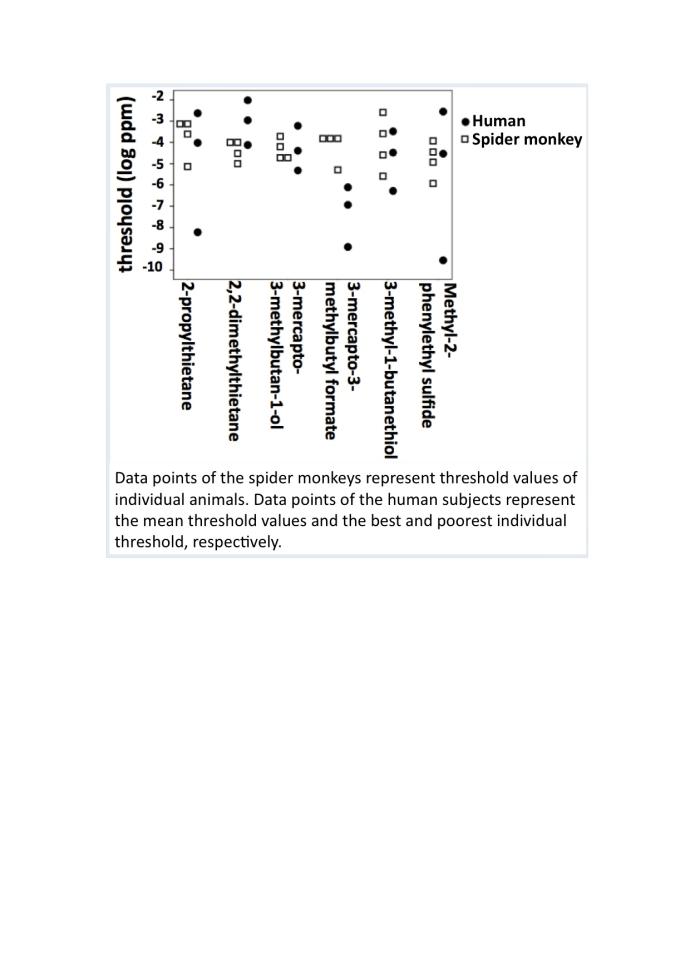Human olfactory sensitivity for predator odorants
A comparison of the olfactory detection thresholds found here to those reported for non-predator odorants suggests that humans might be particularly sensitive for predator odorants.
From an evolutionary perspective, it seems reasonable to assume that human subjects should be particularly sensitive to predator odorants as their ancestors were a potential prey of large carnivores.
An alternative explanation for the high olfactory sensitivity observed for the odorants used in the present study is the fact that all six predator odorants are sulfur-containing compounds. Sulfur compounds typically can be detected at low concentrations.
Comparison between the olfactory sensitivity for the six predator odorants
3-mercapto-3-methylbutyl formate was detected at significantly lower concentrations compared to all five other odorants, whereas 2,2-dimethylthietane was detected at significantly higher concentrations compared to all five other odorants. This is remarkable considering that 3-mercapto-3-methylbutyl formate has a similar chemical structure as 3-mercapto-3-methylbutan-1-ol, and 2,2-dimethylthietane has a similar chemical structure as 2-propylthietane.
Any differences in molecular structural features of odorants may have a systematic effect on olfactory detectability as it has been suggested that type and number of functional groups attached to the molecule and combination of molecular structural features of an odorant determines the interaction with a given receptor and thus its detectability.
An alternative explanation to the present results may suggest that differences in olfactory sensitivity for different odorants is due to differences in the biological relevance of the odorants in question. However, it is unknown whether the odorants tested here differ in their biological relevance for humans.
Sex differences on olfactory perception
The majority of studies, however, reported no sex differences in olfactory sensitivity and failed to find significant differences between males and females in olfactory detection thresholds.
An explanation for gender differences in olfactory capabilities may be related to differences in the role of each gender from an evolutionary perspective. Some authors believe that females were responsible for gathering food which required the ability of odor identification and enhanced olfactory sensitivity, as such females were more likely to be successful in gathering food for their offspring.
Comparison with spider monkeys

Responsible for this page:
Director of undergraduate studies Biology
Last updated:
05/18/12
